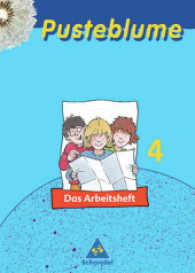Full Description
Are you looking for ways to differentiate your instruction to meet the needs of gifted visual-spatial learners? You've found it in Visual-Spatial Learners: Understanding the Learning Style Preference of Bright But Disengaged Students (2nd ed.). Visual-spatial learners are students who show advanced abilities with computers, maps, construction toys, and puzzles. The techniques outlined within these pages help all learners succeed-regardless of preferred learning style. Based on the most current understanding of the brain's hemispheric functions, the author provides a number of strategies and lesson plan ideas to help make your classroom a successful learning environment for all learners. These strategies address preparing students to succeed on timed tests; easing the pain of handwriting; teaching spelling using imagery; incorporating mnemonics, rhyme, and other tricks that engage the right hemisphere of the brain; helping students stay focused and on track; getting-and keeping-students organized; and much more!
Contents
Introduction Chapter 1 Learning Styles DifferentiationAuditory-Sequential and Visual-Spatial Chapter 2 Finding the Visual-Spatial Kids in Your Classroom Chapter 3 Are Boys More Visual-Spatial Than Girls?: Why Gender Matters in Every Classroom Chapter 4 Reading Chapter 5 Creative Writing Chapter 6 The Art of Handwriting Versus the Act of Keyboarding Chapter 7 Helping Students Ace Their Spelling Tests Chapter 8 Taking Notes in Pictures Chapter 9 Teaching Math Facts Chapter 10 Social Studies: A Natural Environment for Strategies Friendly to Visual-Spatial Learners Chapter 11 Using Visual-Spatial Strengths to Learn New Material Chapter 12 Organizational Skills Chapter 13 Helping Your Students Stay Focused Chapter 14 The Dreaded Timed Test Chapter 15 Creating a Visual-Spatial Classroom Additional Resources References About the Author








